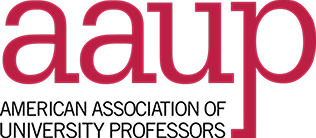Regulations governing the then annual meeting were first formulated by the Council and meeting in 1957. The regulations were last amended by the meeting in June 2019 and are effective as of the close of that meeting.
I. Program
Pursuant to its responsibility under Article IV of the Constitution to "determine the time, place, and program of the biennial Association Meeting," the Council allocates time to Association business and other program items. Association business includes all items requiring the vote of the meeting.
II. Agenda
1. The Council shall approve an agenda for the business portion of the meeting.
2. At the commencement of the business portion of the meeting, the chair of the Agenda Committee shall recommend adoption of the agenda by the meeting.1
III. Rules of Procedure
1. The current edition of Robert’s Rules of Order shall govern the proceedings of meetings of the Association in matters not covered in the Constitution, regulations, or rules specially adopted by the meeting.
2. All motions and amendments to or substitutions for parts of motions shall be written out and handed to the parliamentarian before a vote is taken. Only delegates may bring a matter before the body at the meeting.
3. Delegates, members in good standing, and those authorized by the presiding officer or the delegate body may speak on a matter before the body. No person shall speak longer than five minutes or more than twice on the same question, except with the consent of two-thirds of the delegates present.
4. The minutes of the meeting shall be submitted to the Council for approval.
5. A complaint against an academic institution, raised from the floor of the meeting, will be referred to the executive director for handling in accordance with Association policy and procedures.
IV. Resolutions
1. Resolutions are expressions of opinion by a meeting, not constituting legislative action of the Association. Resolutions concern subjects of general interest to the academic profession and the public.
2. The president of the Association shall appoint a Committee on Resolutions sufficiently in advance of each meeting to permit the names the members of the committee to be announced not fewer than sixty days in advance of the meeting.
3. Members, chapters, and conferences may propose resolutions to the Committee on Resolutions, either directly to a member or members of the committee, or through the executive director. Proposed resolutions not received by May 1 may be moved from the floor if and only if they concern matters that have arisen subsequent to that date.
4. The Committee on Resolutions shall consider all resolutions proposed to it and shall submit recommended resolutions to the meeting. In the event that the committee decides not to submit a proposed resolution to the meeting, the proponent may appeal that decision to the meeting Agenda Committee, whose decision will be final. The Committee on Resolutions may initiate resolutions and may recommend modifications of the resolutions submitted to it.
5. Resolutions brought to the floor may be amended by the meeting if it so chooses.
V. Proposals
1. If a proposal is adopted by the meeting, and concurred in by the Council, the action it proposes becomes the action of the Association. Proposals concern the internal organization of the Association and the Association’s activities.
2. Proposals by members, chapters, or conferences intended for submission to the meeting may be filed with the executive director at any time prior to May 1. Copies of proposals received by that date will be distributed to chapters and conferences, and to those standing committees of the Association that are concerned with the topics involved. All such proposals will be placed on the agenda by the Agenda Committee before the Agenda Committee chair recommends adoption of the agenda of the meeting.
3. The Agenda Committee shall facilitate the orderly consideration of proposals, and shall make an equitable apportionment of available time for discussion and vote on proposals.
4. Any proposal not filed with the executive director by May 1 may be brought to the floor (a) if it deals with a problem that arose subsequent to May 1, (b) if one member of the Agenda Committee concludes that the proposal should be considered by the meeting, or (c) if the meeting by a majority votes to entertain the proposal.
5. Debate on proposals shall proceed as follows. The first person to be recognized by the presiding officer will be the maker of the proposal. The second person will be the chair or other spokesperson of any committee to which the proposal has previously been referred. Thereafter the presiding officer will recognize as many delegates, members in good standing, and other authorized speakers as time permits, with consideration to the extent possible for spokespersons on different sides of the question.
6. Proposals brought to the floor may be amended by the meeting if it so chooses.
Note

